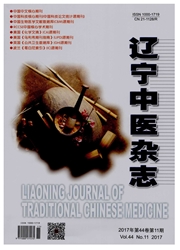

 中文摘要:
中文摘要:
目的:明确骨髓增生异常综合征(MDS)西医危险度转化和中医脏腑传变之间的相关性。方法:分析170例患者(其中脾胃亏虚毒蕴型MDS患者40例、脾肾亏虚毒蕴型MDS患者40例、肝肾亏虚毒蕴型MDS患者30例、急性髓系白血病患者30例、非血液肿瘤血液病患者30例)的原始细胞数、细胞免疫表型、SF381基因、TET2基因、DNMT3A基因、HDACl基因,研究MDS西医危险度转化和中医脏腑传变之间的相关性。结果:“骨髓原始细胞比例”可以作为MDS毒蕴型的定性指标;“骨髓染色体”可以作为MDS毒蕴型的预后指标;SF381基因多出现于低危型MDS患者中,TET2基因多见于中高危型MDS患者中。结论:MDS的西医危险度转化和中医脏腑传变之间具有相关性,并且MDS低中危向高危传变与其脏腑传变(脾胃→脾肾→肝肾)相一致。
 英文摘要:
英文摘要:
Objective:To analyze their relationship between risk progression in western medicine and viscera transformation in traditional Chinese medicine of MDS. Methods:The bone marrow blast cell count, the immune phenotype, SF3B1, TET2, DNMT3A and HDAC of 170 patients were analyzed,among which 40 were spleen -stomach deficiency syndrome,being attacked by patho- genic factors inward ;40 deficiency of spleen and stomach, being attacked by pathogenic factors inward;30 deficiency of the liver and kidney,being attacked by pathogenic factors inward. Results:The blast percentage can be the criteria of the degreen among MDS patients,while the immune phenotype is the prognosis of MDS patients. SF3B1 can be seen more in the patients with lower risk and TET2 showed up more in those with higher risk. Conclusion:Risk progression in Western medicine is related to viscera transformation in traditional Chinese medicine. The lower risk transforming to high risk is agree to viscera transformation.
 同期刊论文项目
同期刊论文项目
 同项目期刊论文
同项目期刊论文
 期刊信息
期刊信息
